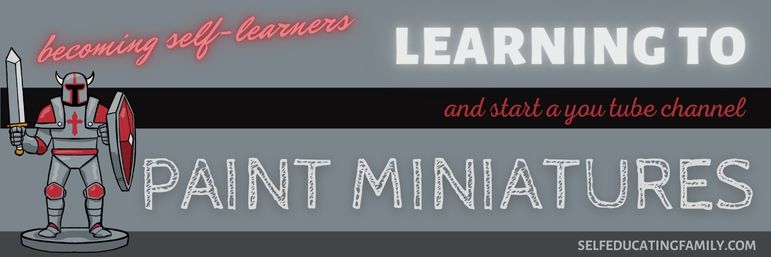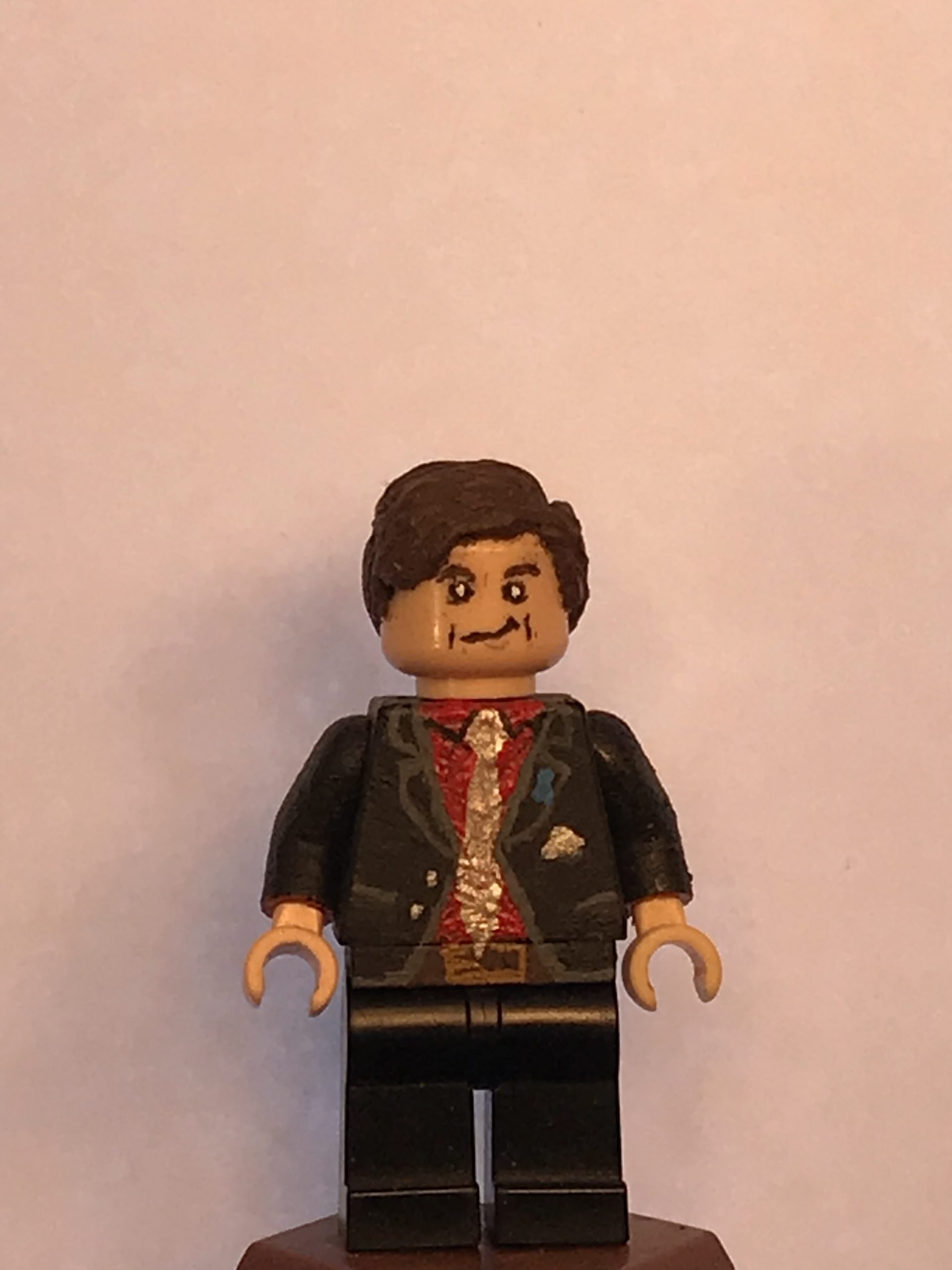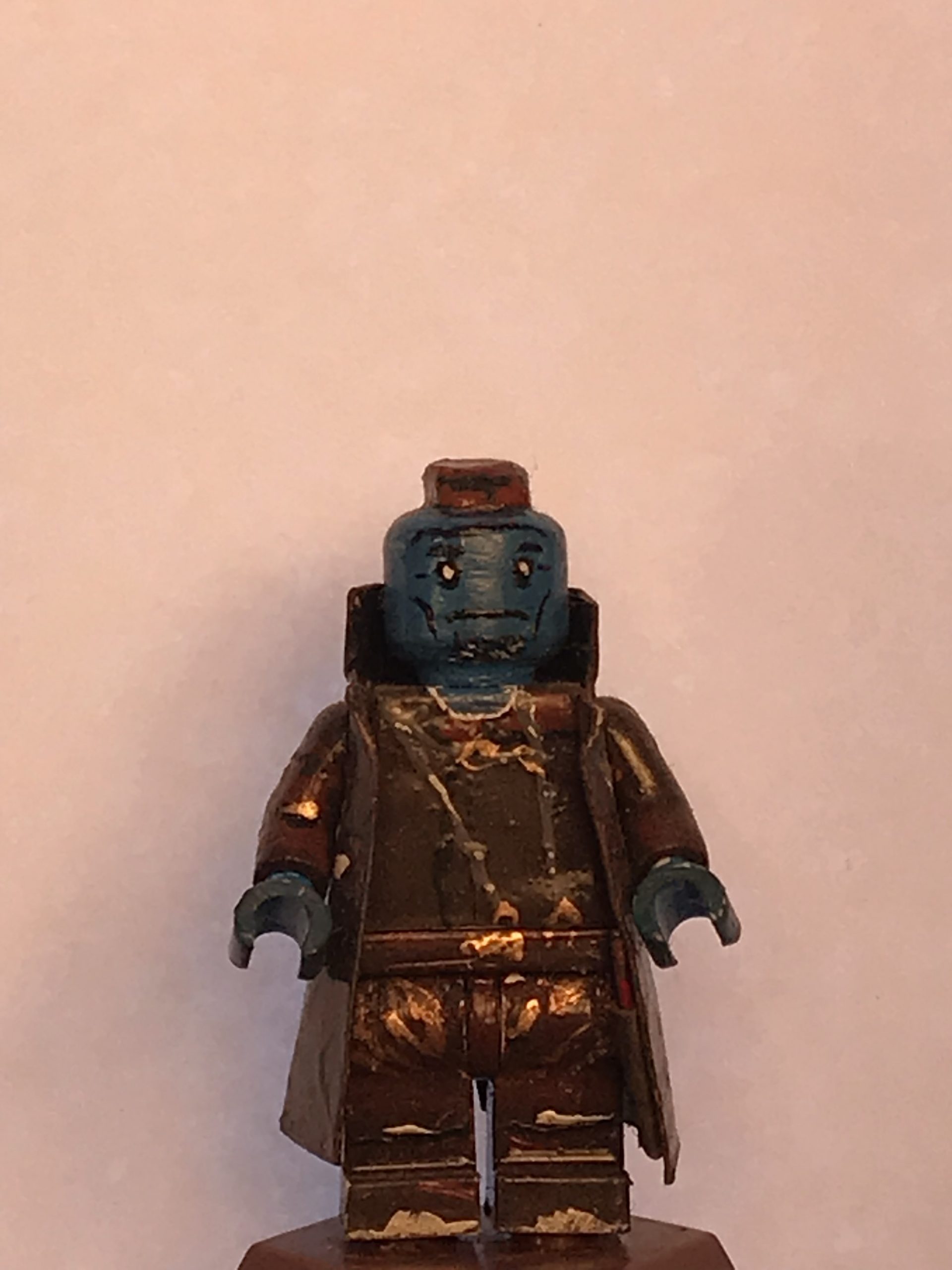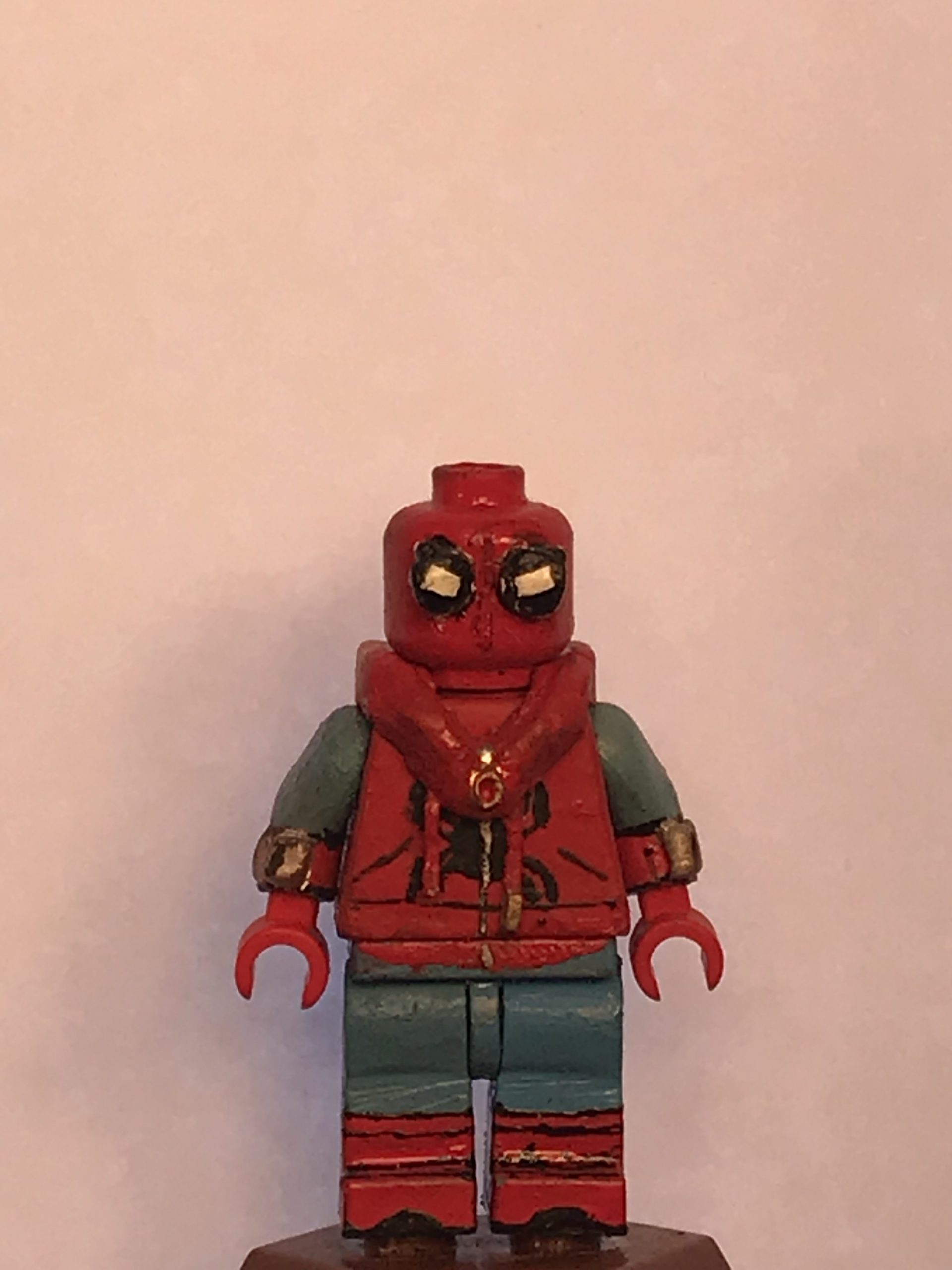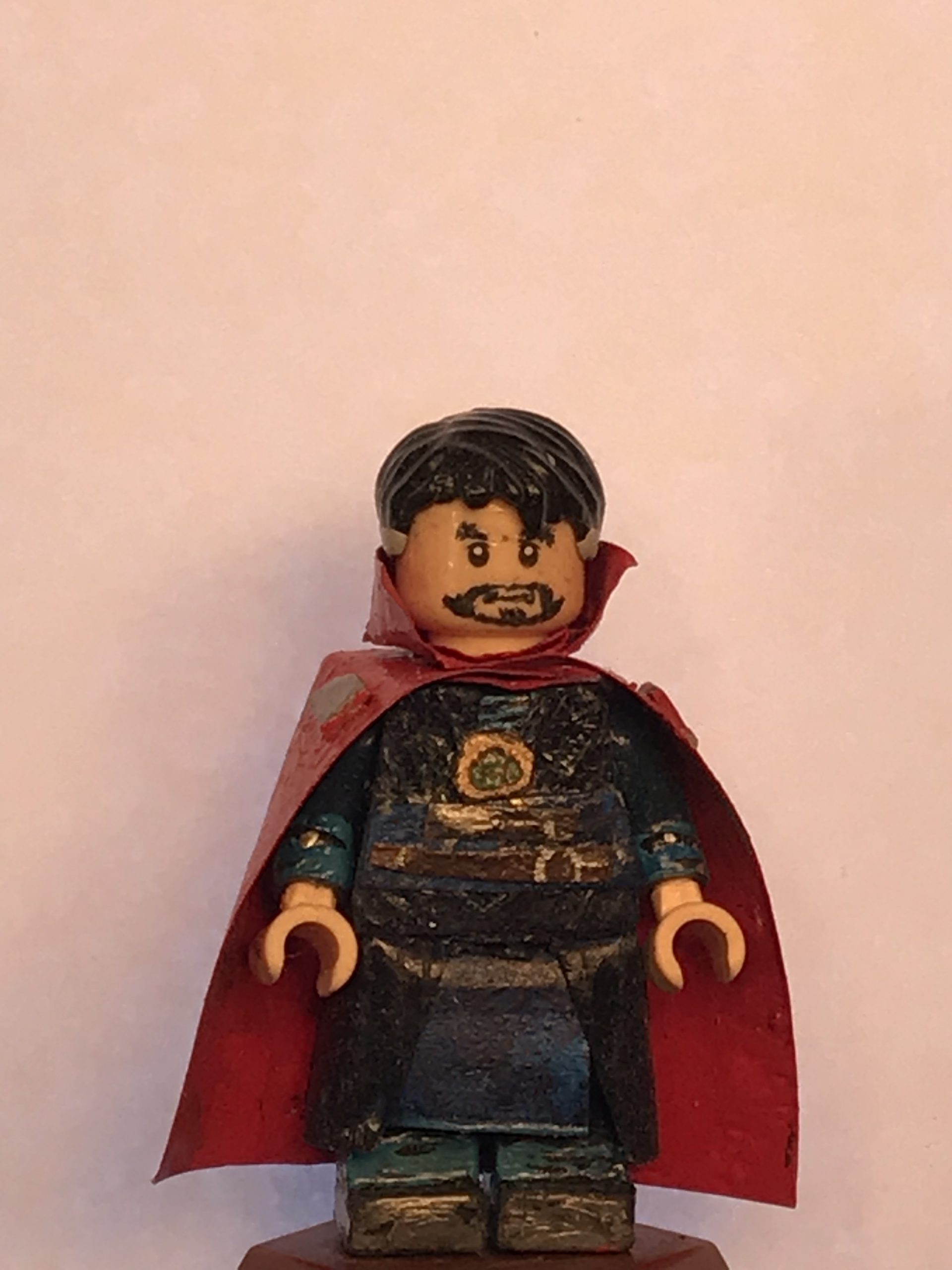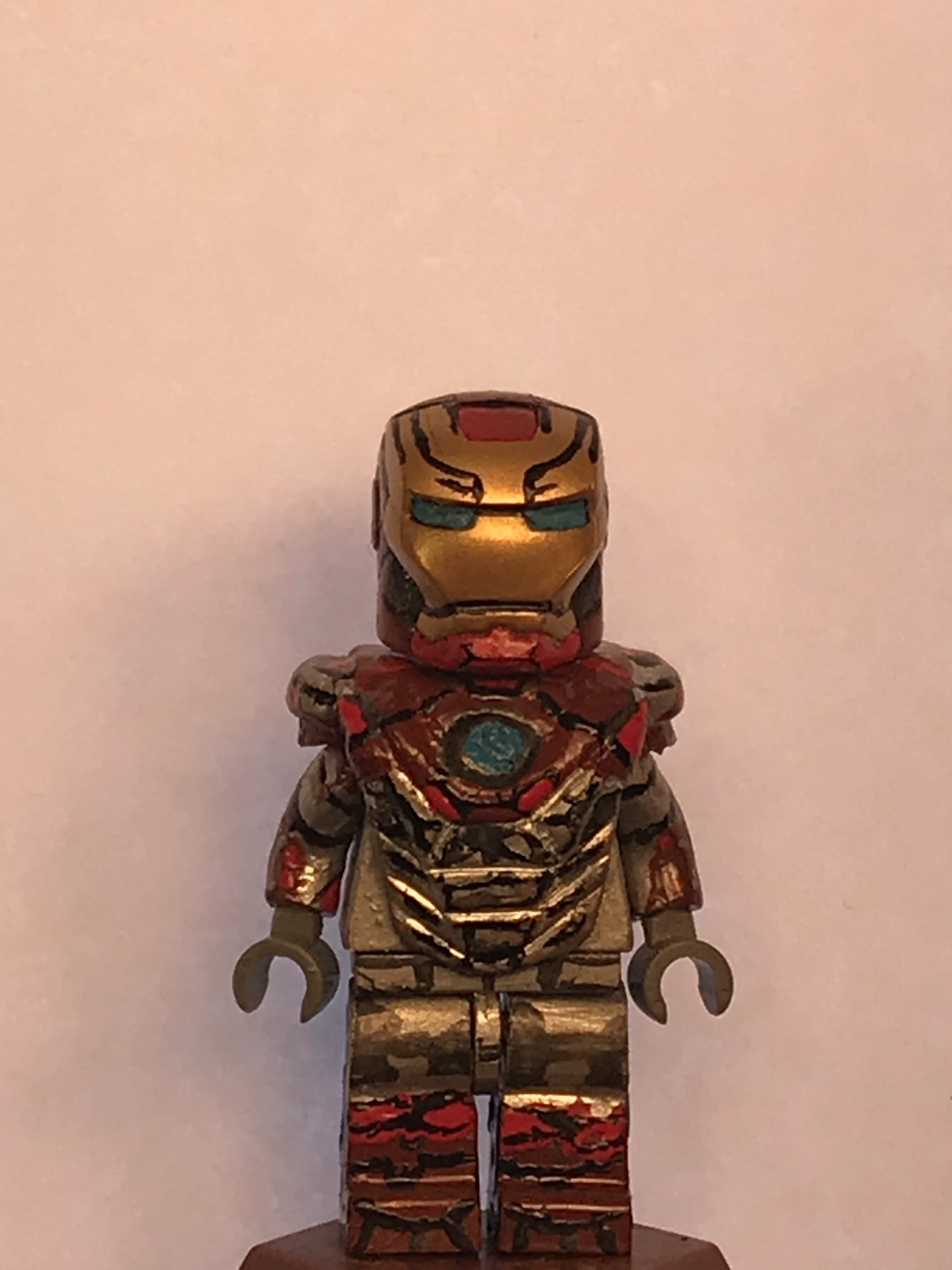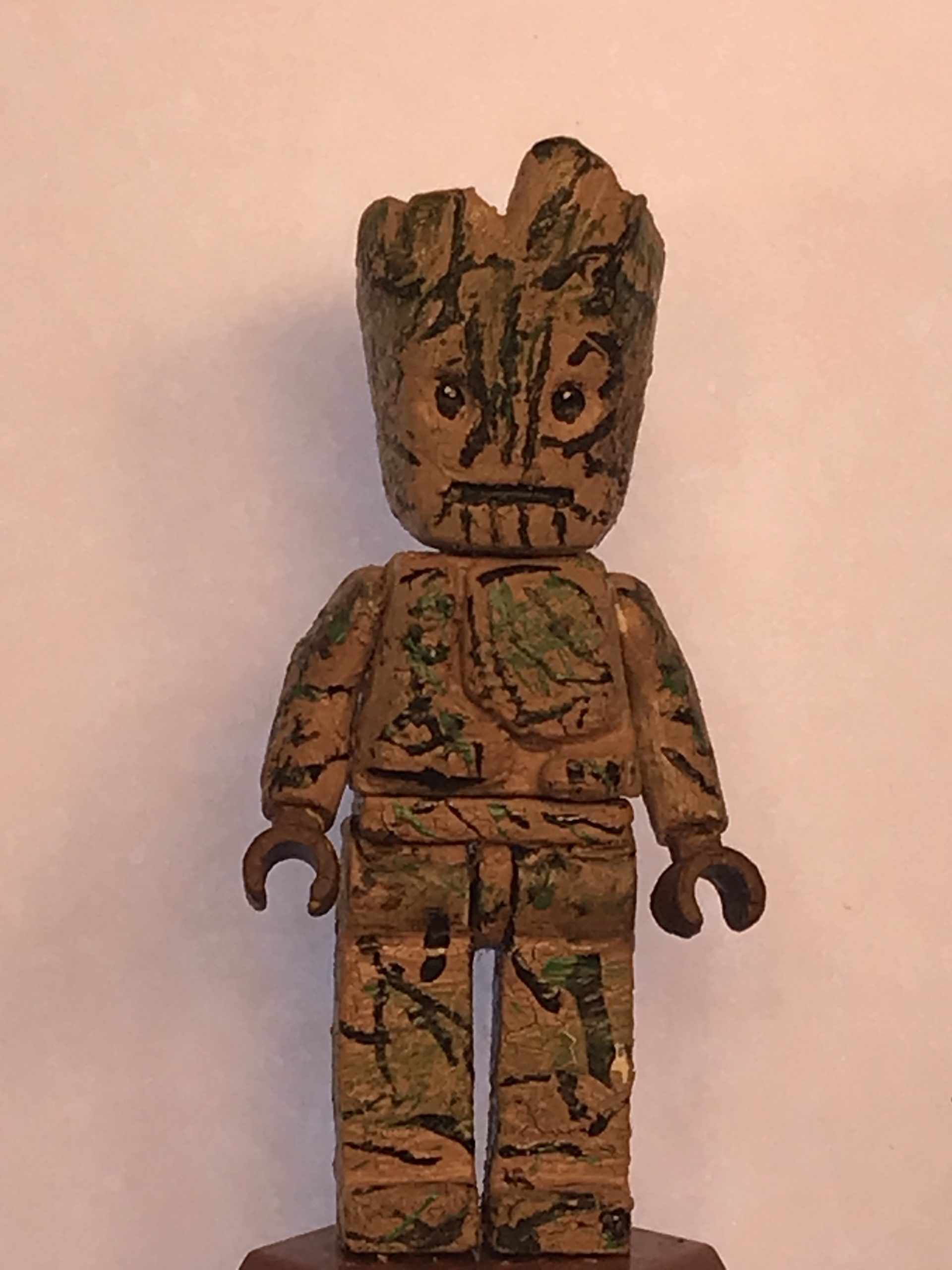“Painting miniatures for beginners” was not a handicraft that I specifically taught to my children. Yet, one son has embraced this hobby. He was a complete beginner learning to paint miniatures on his own!
To me, it was astounding that he even started liking painting in general! This was from a kid who hated to pick up a crayon!
Funny story
So, the funny thing is, one of my sons took off in a direction I had no idea he would go in. NOT a CLUE!
This is what happens with Charlotte Mason’s educational methods. You teach your kids to be self-learners, and you spread a feast of ideas before them, and some unexpected idea takes hold.
In this case, it was with a handicraft idea–painting miniatures!
It happened to us before once, too. In that case, a different son latched onto something related to physical education (weightlifting!) That son took it upon himself to learn to lift weights.
In this case, my younger son was enthralled with miniature painting and sculpting.
Both ideas sprang from a whole slew of ideas that were presented to my kiddos in various forms, but you never can tell what idea will yield the beginnings of a lifelong hobby or passion.
Here’s the story
How many little kids ADORE crayons and paints? All of them, right?
Well, not my sons.
All right, my oldest twins did enjoy finger painting each other. (I mean, completely covering each other’s legs, arms, and whatever else wasn’t covered with clothes. Somehow, that happened much faster than I could prevent it. New mom, what can you expect?) At least we were outside where I could hose them off at the time.
But crayons? Not so much.
And their little brother also avoided coloring despite my encouragement.
None of them liked to color or draw.
And they hated nature study watercolor painting.
Nonetheless, I persisted in choosing topics for handicraft each semester, like acrylic painting, watercolor dry brush painting, drawing class, advanced drawing class – all kinds of artsy stuff. Gently encouraging them in a totally Charlotte-mason way. (Me: “Too Bad! You’ll do it because I said so!”*)
*Note: this is not the proper Charlotte Mason technique.
Making a short story longer
My younger son happened to love Lego.
And one semester, he asked if he could do sculpting (Sculpy-type of sculpting). Thrilled, I said, “Of course!”
He ended up sculpting accessories onto his “lesser” Minifigures (the ones he thought were not exciting enough) and changing them into something more desirable. He sculpted new shapes onto these little figures, then painted them and ended up with new little figures.
And then…
He started painting over all kinds of Lego Minifigures. He went back and forth, sculpting new shapes onto Minifigures and painting them.
Next, he started sculpting his own figures from scratch.
Then, he started to learn complex painting techniques. Layering paints, shadows, highlights, airbrushing… Then he entered the world of miniature figures from board games.
Tabletop miniatures games
Did you know there is a whole world of strategic tabletop miniatures games with armies and teams of little figures? And they usually come unfinished so the gamer can paint his teams.
We’re talking “Warhammer” type of game, although that’s not one of my son’s games. He has games like Star Wars Legion, A Song of Ice & Fire Miniatures game, and Marvel Crisis Protocol.


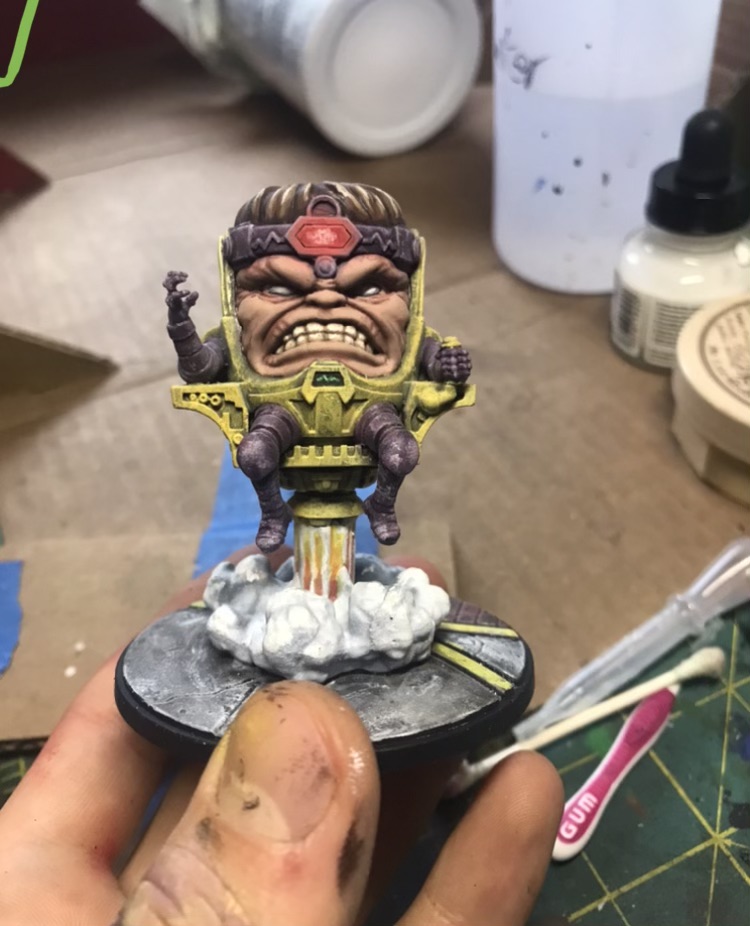
The learning didn’t stop there
Next, he decided to learn to video his process. So he learned audio and video editing. This is all on his own.
Then he started his own YouTube channel to chronicle painting miniatures for beginners: Beginner Miniatures.
He’s currently paused at the moment because of a time constraint due to college studies, but he really enjoys it and will be back editing as soon as he can.
You just can’t tell
The takeaway here is that you cannot tell where learning is going to become inspirational for someone. If you teach young people, I encourage you to set a feast before them. A feast of ideas. And while specifically teaching “painting miniatures for beginners” may not be your cup of tea, it might be your kid’s. Or your kid might have something equally unexpected.
Because “Children are persons.”
Children are persons.
Charlotte MAson
* Disclosure: This post contains affiliate links, meaning that if you make a purchase after clicking through, SelfEducatingFamily will receive a small commission at no extra cost to you.
FAQ about painting miniatures for beginners
Recap: how my son learned to paint miniatures:
- My son learned on his own after being exposed to a variety of semi-related handicraft topics.
- Did you see his progression, though? While he didn’t start with enthusiasm about painting right away, as he gained basic skills, he then shifted to the specific area that did interest him.
- In fact, this may have been one of the problems my sons had with coloring. I never taught them basic skills until they were older.
- I think when they were little, they had an idea of what they wanted to create and it wasn’t magically coming out the end of their crayons.
- Sometimes, teaching skill-building is tricky because you need to feel like you are making progress.
- It’s one of the principles of educational sloyd that the level you are teaching to a child is “just right” – challenging enough to hold interest, and still easy enough to achieve competency and make something of value to them.
- In this case, letting my son go on his own (directing him to resources now and then where he could pace himself) allowed him to progress naturally.
- He basically determined that he would master each piece of the puzzle by working diligently on it.
- Remember – handicraft has to be within the child’s grasp.
- As a teacher, you can sometimes underestimate, but you can also overestimate ability—age, maturity, and level of independence all play a factor.
How do I start painting miniatures?
- Practice on a miniature that is pretty simple at first.
- Break down the skills you need. For instance, you need to get very accurate at painting tiny details. This is called brush control.
- Learn where natural highlights fall on geometric objects. This observation skill will let you begin to paint shadows and highlights.
- Keep learning new techniques. For instance, learn “blending” or “glazing” if you haven’t tried it before.
- Work your way from “easy” models to harder ones, eventually getting to models that have a decent amount of complexity.
- Find a good mentor. Or a good YouTube mentor.
How do I paint miniatures step by step?
There are lots of good step-by-step videos out there.
Here are some of our favorites:
- Tabletop Time Miniature painting guide
- Squidmar Miniatures Ultimate Guide
- Miniac How Do you Start to Paint Miniatures
Is miniature painting difficult?
- Yes and no. If you can’t do it, it’s not easy. If you’ve been learning for a while, it becomes easier.
- The answer depends entirely on you! Do you have the patience, interest, and perseverance to learn a new skill?
- Some people may find it easier: Are you good with fine detail work? Are you good with seeing details in colors, shapes, and textures? Do you have a steady hand?
- Sometimes, you end up painting to a more superficial level. For instance, if you have 60 of the same guy to paint (remember – in miniature games, you have entire armies of figures), you probably don’t want to make the most incredible painting ever. So you have to learn shortcuts.
What kind of paint do you use to paint miniatures?
- My son started with inexpensive acrylics but rapidly progressed to better paints. Vallejo is an excellent brand for painting miniatures – you get a lot of value for the money.
- As my son progressed, he tried different paints for different effects. For instance, Army Painter is a good brand for washes (a lightly pigmented, high transparency paint with low surface tension, so it pools in the low spots and doesn’t stay on the higher spots giving you an artificial shadow.)
- Recommendation: go slowly, and experiment to find out what works for you.
Keep Learning
For learning about learning something new:
For learning specifically about painting miniatures for beginners from my son’s Youtube channel:
